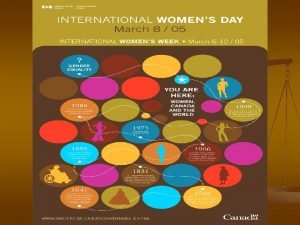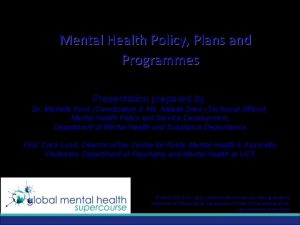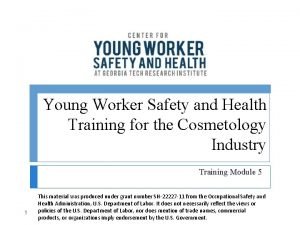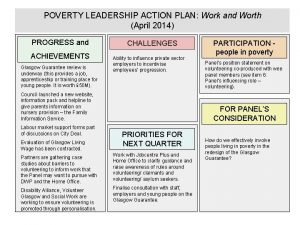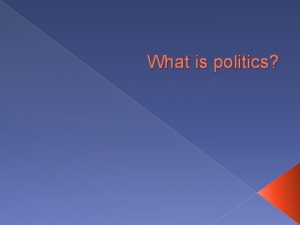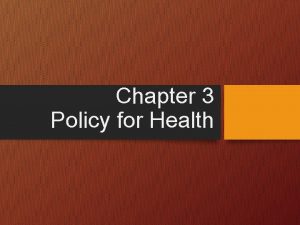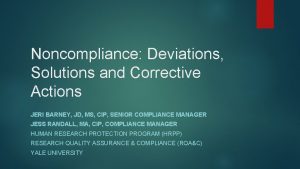Health Policy and Politics Leadership in Action Jeri











- Slides: 11

Health Policy and Politics: Leadership in Action Jeri A. Milstead, Ph. D, RN, NEA-BC, FAAN

About the Author Professional Experience § 50+ years as RN – practice, education, administration, policy § Internationally-recognized expert in health policy Teaching Experience § Dean, CON, U. Toledo (Ohio) 10 yrs. § Dir. Grad. Programs: Duquesne U. (Pittsburgh, PA) 3 yrs. § Faculty: Clemson U. (Clemson, SC) 10 yrs. Education/Credentials § Ph. D Political Science – U. GA § MS & BS, cum laude – Nursing, The Ohio State University § Diploma – Nursing – Mt. Carmel Hospital School of Nursing

How Policy Is Made § “By those who show up”— that is, by those who participate § Federal government’s active interest in 1990 s in health policy prompted nurses to realize the power of our voice ‘at the table’

What Does That Mean? If nurses are not involved, policy decisions are made by those with little or no knowledge about nursing, health, patient care. Do not expect policy makers to know what we want unless we tell them.

Policy Making = Nurse Leadership • Nurse must become policymaker’s ‘best friend’—i. e. , valuable contact • Get to know policy maker and staff • Nurse must initiate the contact and sustain it— contact every 1 -2 months at least • Provide information & data in plain English; • Be available for quick meetings/phone calls (e. g. , 5 -15 min. each)

We Don’t Have To Do This Alone • Nurses no longer work in silos– practitioners must work together as a team to provide access and quality in a cost-effective manner. • Use your professional network of experts; • Find common ground on issues; • Seek solutions—do not focus on what has not worked • Respect colleagues’ perspectives

Nurses Lead in Requiring Policy Content in Curriculum • Professional education programs for physicians, pharmacists, psychologists, etc. , do not require content on the process of making policy. • This is an opportunity for nurses to take leadership in instructing our colleagues.

Leadership Opportunities §Initiate discussion within teams of healthcare professionals §Focus on many occasions for real involvement—not just during legislative process §Promote ideas for research and projects

Leadership Continued • Role model contributions to policy process • Validate personal authority and power • Project confidence in creative decision making

One Immediate Resource: Covers whole policy process (not just legislation) • Agenda setting • Government response (legislation, regulation) • Design and Implementation • Evaluation

Inside At A Glance Written by experts who have experience and education in public policy & nursing Expands policy to all health care professionals – Interprofessional chapter written by 3 non-nurse experts in their fields (Pharmacist, Psychologist, Physician) § Case studies – relevant, realistic, with discussion points for the reader’s consideration § Impact of Social Media on Health Decisions § Healthcare Economics and Finance § Global Perspective
 Transactional leadership
Transactional leadership Falsafah pendidikan negara 2021
Falsafah pendidikan negara 2021 Elemen falsafah pendidikan kebangsaan
Elemen falsafah pendidikan kebangsaan Jeri elster
Jeri elster What is adaptive leadership style
What is adaptive leadership style Enthusiastic beginner disillusioned learner
Enthusiastic beginner disillusioned learner National policy and legislation related to child health
National policy and legislation related to child health Mental health policy, plans and programmes michelle funk
Mental health policy, plans and programmes michelle funk Safety and health policy example
Safety and health policy example Leadership action plan sample
Leadership action plan sample Health and social component 3
Health and social component 3 Power and politics in organizations
Power and politics in organizations



